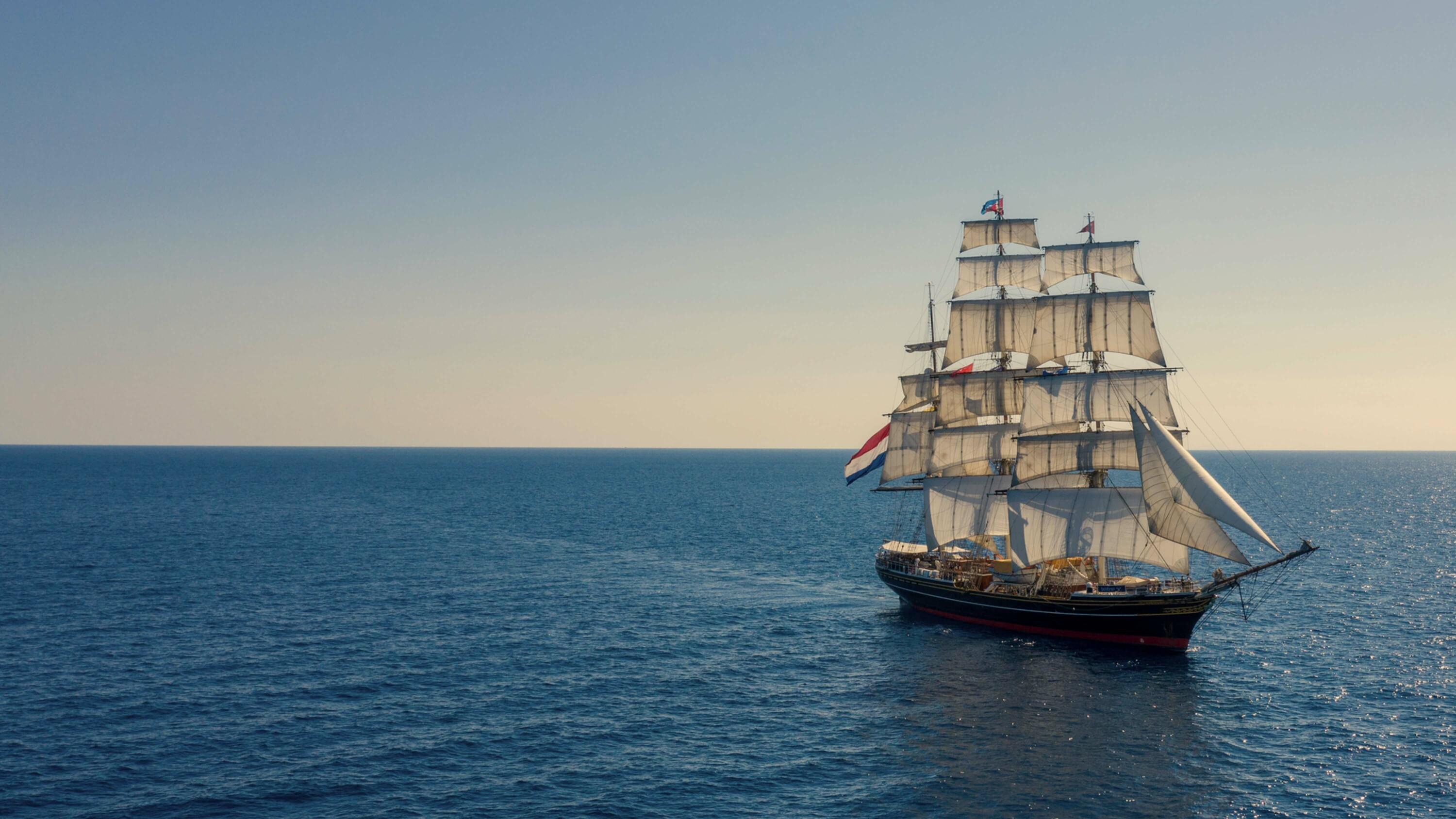the clipper stad amsterdam story.
The Clipper Stad Amsterdam is a vessel with a story. It all started during the SAIL Amsterdam 1995 event, when five municipal councillors were travelling by barge from the VOC-ship Amsterdam to the mayor’s official residence. “Wouldn’t it be great,” one of them said, “to build another of those great sailing ships from the past, as a symbol of the commercial spirit of the city of Amsterdam?”
During the '90s, the building of ships offered opportunities to school leavers and the unemployed. The chance to work with master craftsmen provided them with a set of skills that would later help them find new positions.
The ship officially launched in 2000. Rita Kok, wife of the serving prime minister Wim Kok, christened the ship and the Clipper was revealed to the public for the first time during the SAIL Amsterdam 2000 event. The press and public were very enthusiastic: at last, the Netherlands had its own historic flagship, sustainably built and having provided working opportunities to many of the country's less fortunate.
-
youth employment
During the construction between 1997 and 1998, Goldschmeding made sure the project provided opportunities for graduates and unemployed. The chance to work with master craftsmen gave them a set of skills that would later help them find new jobs.
Today, the Clipper partners with local Randstad offices to drive employment with our local clients and talent communities.
-
diversity, inclusion and equity
The guest list of the ship has been extremely diverse and impressive, ranging from youths from less privileged backgrounds to sailing enthusiasts to senior business people, heads of state and Royalty.
With 12 nationalities, the crew is as diverse as the guests she holds. They create a participative experience, involving the guests in the story of the ship and its messages.
-
sustainability
Sustainability is part of the Clipper’s DNA as well as that of the shipping company. Life at sea means being very close to nature.
The large-scale refit in 2019/2020 resulted in a major step being taken regarding the sustainable course of the Clipper. The ship now has much cleaner and more efficient engines for both propulsion and power supply.
An exhaust gas treatment and a new wastewater treatment has been installed to fulfill future requirements of the International Maritime Organisation (IMO). An improved shore power connection has been implemented to eliminate the use of generators in the port and unnecessary use of diesel.



